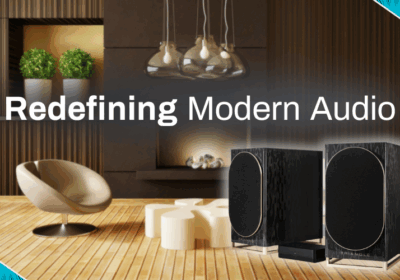The Audio Visual industry is one of the most vibrant, exciting and satisfying industries around. It is fantastic to work in an industry that creates enjoyment through music and entertainment – there is no downside to what we do.
It is also an industry driven by buzz words and acronyms. There is always that exciting next great thing or the latest format over the horizon. However, I suspect that, on occasion, the next great thing has more to do with the marketing department than it does the engineering department. Despite the significant advances over the decades, we also have a long history of creating demands for products that are at best no better than what came before, or at worst not as good as the ones they superseded.
The most controversial example of this is CD. Many still hold that CD never reached the performance levels of vinyl – the initial releases were undoubtedly a backward step. Inevitably CDs also came under attack, in the form of the very convenient MP3. All the music in the world at your fingertips – but the less said about the sound quality, the better. Admittedly, this did form the foundation of streaming today, giving us both performance and convenience.
Video did not fare any better. Despite the apparent drawbacks, the picture quality of the humble CRT TV was superior to the flat-screen sets that replaced it. In my opinion, the following formats continued this downward trend. Thankfully the current OLED technology has resulted in the highest performance screens we have seen – but it has been decades since the old-fashioned CRT was scrapped.
The current buzzwords high on everyone’s radar is Wireless and Bluetooth! Both should also be treated with a level of caution.
We are regularly approached by people building new homes who insist that they want the latest wireless technology installed. Our advice would be to think very carefully before going down this path! While there is an undeniable place for wireless technology in any new build, if the application suits a wired solution, we suggest you do so. The only real advantage of wireless over wired is the cost of implementation – yet most people would spend more on their kitchen benches than what an adequately wired cable infrastructure would cost. Remember that all capable wireless systems start with a wired background anyway, so the additional step is not that daunting.
There are numerous advantages of wired installations over wireless. They are less prone to interference, and they are more secure. Most importantly, they are faster with greater bandwidth. They are not impacted by periods of high-level usage, i.e. in a wired situation, each device is connected directly to the router and not affected as additional users come online (assuming that your router and switches are up to spec).
We are also approached frequently by people seeking a multi-room music system – using Bluetooth. I suspect in many cases that this is simply a misunderstanding of what Bluetooth is, and they have not delved into the format to see if it would be suitable for the application. Again, we believe that there are many valid applications for Bluetooth speakers, take them to the beach or BBQ, and are ideal for small environments such as bedrooms. Plus, the technology is perfect for close location situations such as your car or headphones. But they do not make sense as a whole-of-house music system. Firstly, very few dedicated Bluetooth speakers are built for performance; they are a convenience product. More importantly, it means that your entertainment system is constantly tethered to your phone, tablet etc. and subject to interruptions when the phone rings or the device is out of Bluetooth range. And as good as Bluetooth is, it is not the most reliable of connections.
Many companies are producing multi-room streaming systems, using a combination of wired and wireless technologies that sit reliably on your network (and some of these incorporate Bluetooth as well). Brands like Sonos, BlueSound, Heos and MusicCast are reliable, relatively inexpensive, simple to use, and when correctly configured, especially when integrated with other Hi-End brands, are capable of superb performance.
When you are building, upgrading your audio system, or even starting out with your first system, try to look beyond the buzzwords of the day. If in doubt, seek advice from your local specialist.




